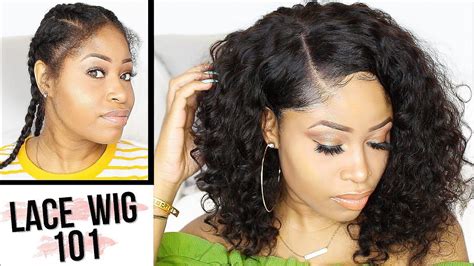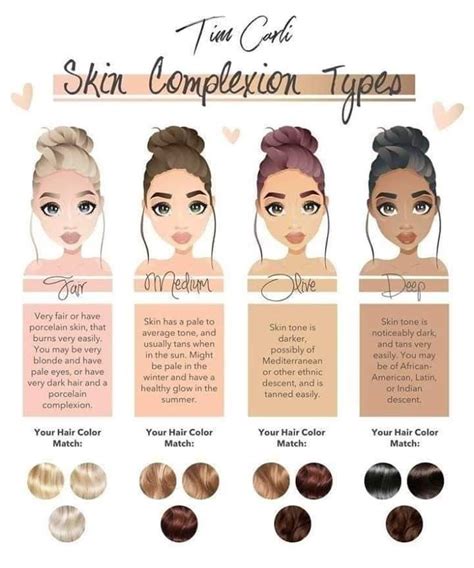Introduction
Choosing the perfect hair color can be a daunting task, especially if you’re not sure what shades will complement your skin tone. The right color can enhance your natural features, boost your confidence, and make you look and feel your best. To help you navigate this challenge, we’ve compiled a comprehensive guide that will provide you with the knowledge and tools to select the most flattering hair color for your unique skin tone.

Understanding Skin Tones
Before delving into hair color options, it’s crucial to understand your skin’s undertone. This refers to the subtle, underlying color that influences your overall complexion. There are three primary skin undertones:
- Warm: Skin with a golden, peachy, or yellow hue
- Neutral: Skin with a balanced mix of warm and cool tones
- Cool: Skin with a pink, red, or blueish undertone
Matching Hair Color to Skin Tone
Once you’ve identified your skin undertone, you can narrow down your hair color options to shades that will harmonize with your natural coloring. Here’s a detailed breakdown:
1. Warm Skin Tones
Warm skin tones look best with hair colors that mimic the golden hues of their complexion. Consider shades like:
- Honey blonde: A warm, golden blonde that adds radiance to the face
- Caramel brown: A rich, warm brown that creates a sophisticated and natural look
- Auburn: A reddish-brown hue that complements golden undertones and enhances the eyes
2. Neutral Skin Tones
Neutral skin tones have the flexibility to wear a wider range of hair colors. However, they tend to look particularly flattering in shades that have a slight warm or cool undertone to complement their balanced complexion. Ideal options include:
- Beige blonde: A versatile blonde with a warm undertone that adds warmth to the face
- Chestnut brown: A deep, warm brown with a hint of red that enhances depth and dimension
- Ash brown: A cool-toned brown that creates a modern and sophisticated look
3. Cool Skin Tones
Cool skin tones suit hair colors that mirror their cool undertones. These shades include:
- Platinum blonde: A pale, icy blonde that creates a striking contrast with cool skin tones
- Ash blonde: A cool, muted blonde that neutralizes any redness in the complexion
- Cool brown: A dark, ashy brown that complements pink undertones and creates a mysterious aura
Hair Color Trends for 2023
In addition to your skin tone, it’s also worth considering the latest hair color trends to find a shade that’s both flattering and fashionable. Here are some of the top trends for 2023:
- Bronde: A blend of blonde and brunette shades that creates a warm and natural look
- Caramel highlights: Warm, golden highlights that add depth and dimension to dark hair
- Ashy tones: Cool, muted shades that create a modern and sophisticated look
- Copper accents: Reddish-brown tones that add warmth and radiance to the face
Hair Color Consultation for Personalized Results
While the guidelines provided above can help you narrow down your options, a professional hair color consultation is the best way to determine the most flattering shade for your unique skin tone and features. A skilled stylist can assess your skin, hair texture, and personal style to create a customized color plan that will enhance your appearance and boost your confidence.
Table 1: Skin Tone Undertones and Example Hair Colors
| Skin Tone Undertones | Example Hair Colors |
|---|---|
| Warm | Honey blonde, Caramel brown, Auburn |
| Neutral | Beige blonde, Chestnut brown, Ash brown |
| Cool | Platinum blonde, Ash blonde, Cool brown |
Table 2: Hair Color Trends for 2023
| Trend | Description |
|---|---|
| Bronde | A blend of blonde and brunette shades |
| Caramel highlights | Warm, golden highlights |
| Ashy tones | Cool, muted shades |
| Copper accents | Reddish-brown tones |
Table 3: Hair Color Consultation Benefits
| Benefit | Description |
|---|---|
| Personalized color plan | Tailored to your unique skin tone and features |
| Expert advice | From a skilled and experienced stylist |
| Confidence boost | Knowing you’re rocking the most flattering shade |
Table 4: Step-by-Step Guide to Finding the Perfect Hair Color
| Step | Description |
|---|---|
| 1 | Determine your skin tone undertone |
| 2 | Explore hair color options that complement your undertone |
| 3 | Consider your hair texture and personal style |
| 4 | Consult with a professional stylist for personalized advice |
Conclusion
Choosing the right hair color is an art that combines an understanding of skin tones, color theory, and personal preferences. By following the guidelines outlined in this comprehensive guide, you’ll be well-equipped to select a shade that enhances your natural beauty, complements your skin tone, and boosts your confidence. Remember, the journey to finding your perfect hair color is an ongoing process, so don’t be afraid to experiment and seek professional advice to achieve your desired look.
